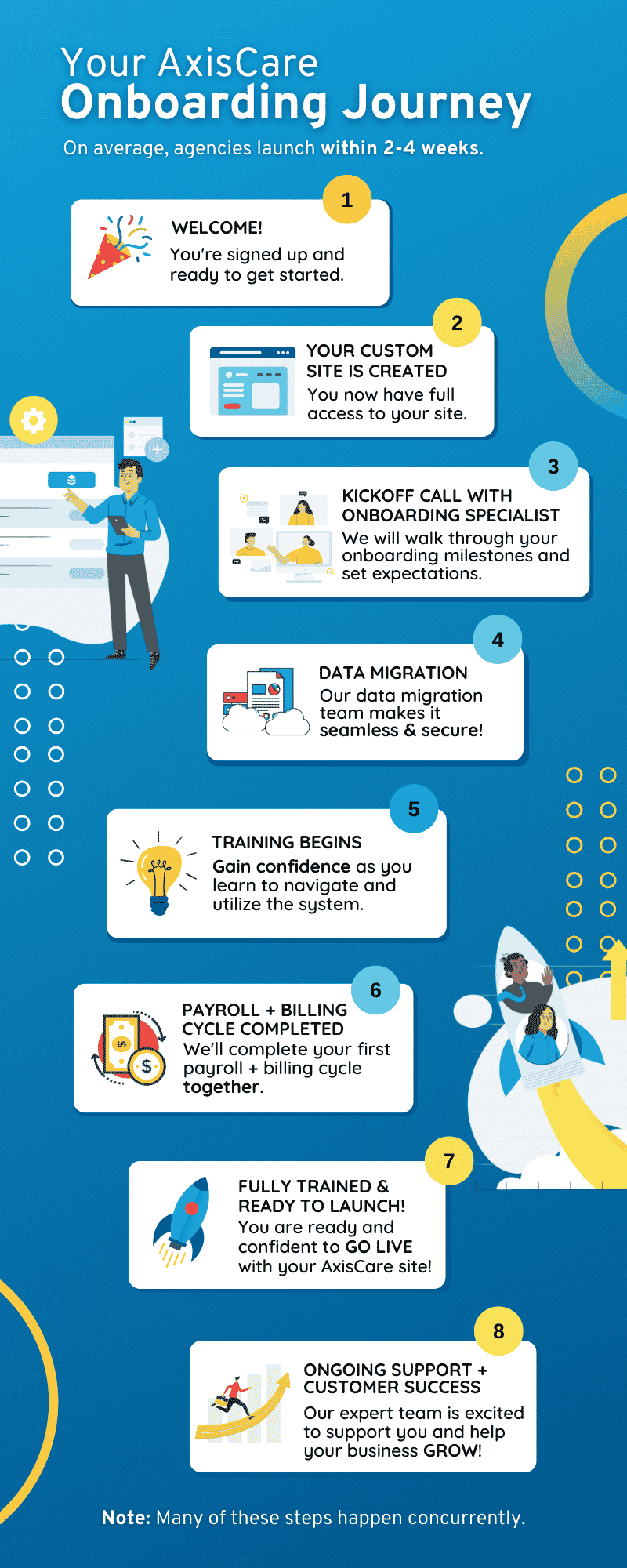On Monday, April 22nd 2024, the Centers for Medicare & Medicaid Services (CMS) released the final Ensuring Access to Medicaid Services rule (Access Rule), introducing significant adjustments to how Medicaid reimburses for home and community-based services (HCBS).
Key Aspects of the Rule
The 80-20 Provision: The rule mandates that 80% of Medicaid reimbursements for home- and community-based services (HCBS) must directly support caregiver wages. This is intended to improve compensation and, by extension, access to quality care. It’s important to note that this calculation may exclude certain costs. Expenses such as paid time off (PTO), travel, and training may be deducted before the 80% is calculated. Therefore, the effective financial margins for home care agencies might extend up to 35-40%, providing more flexibility in budgeting than initially appears.
Industry Concerns
Potential for Negative Outcomes: The rule has met with substantial opposition from various stakeholders, including healthcare providers and industry leaders. Critics argue that the financial constraints imposed by the 80-20 provision could lead to reduced services, particularly affecting small providers and those in rural areas. Providers are worried that the rule overlooks other critical investments in the workforce, such as training programs and assistive technology, which are essential for high-quality care provision. This oversight might lead to reduced service capabilities.
Additionally, the rule’s impact may vary significantly from state to state, as local regulations and the specific conditions of Medicaid markets can influence how these changes are implemented. Agencies should closely monitor developments in their states to better understand and prepare for these regional differences.
The National Association for Home Care & Hospice (NAHC) has strongly criticized the rule, describing it as a “misguided policy” that could lead to agency closures and force providers to exit the Medicaid program. Such outcomes would worsen access issues nationwide.
Supportive Measures
Other Provisions: Despite concerns about the 80-20 provision, the rule also includes measures intended to enhance transparency and accountability in Medicaid reimbursements and to improve the quality of care through standardized quality measures.
Timeline for Implementation
Phased Implementation: As we look ahead to the changes brought by the new Medicaid Access rule, it’s important to remember that the implementation of critical provisions like the 80-20 rule will not begin for another three years. Home care agencies can use this time to stay informed and proactive. There are several resources on the topic out there that we recommend, including HCAOA’s website, where you can find their Fact Sheet and formal comments submitted to CMS in partnership with the National Association for Home Care & Hospice (NAHC).
What’s Next:
Given the evolving landscape, home care agencies are encouraged to begin diversifying their revenue streams now. Exploring avenues such as private pay, specialized care services, or partnerships with non-Medicaid funding sources can help build financial resilience over the next several years.
Consider these strategies for diversification:
- Expanding private pay offerings to individuals and families
- Developing specialized care services to meet unique patient needs
- Forming partnerships with organizations that provide non-Medicaid funding










